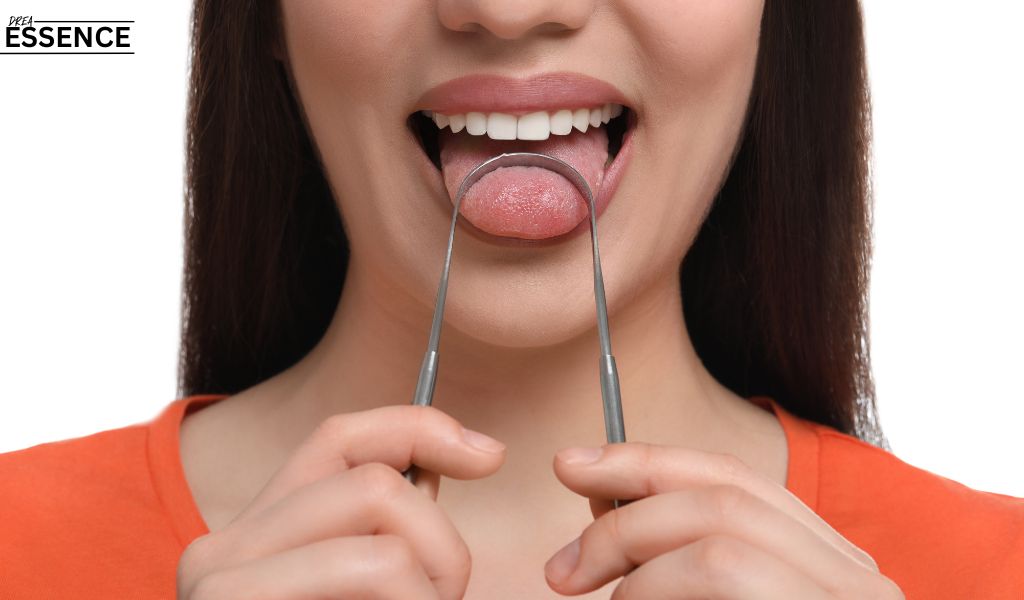In This Post
When we think about oral hygiene, we usually focus on brushing and flossing. But there’s another important step that often gets overlooked—tongue scraping. This easy and effective tool can make a big difference in your overall mouth health. In this blog, I’ll walk you through how to use a tongue scraper, why it’s a great addition to your routine, and what types are available so you can pick the right one for you.
Different Types of Tongue Scrapers
Tongue scrapers come in a few different materials. Here’s a quick rundown of the most common ones:
- Stainless Steel: Durable, long-lasting, and easy to clean.
- Copper: Known for its natural antimicrobial properties.
- Plastic: Soft and budget-friendly but less durable.
- Silicone: Gentle and flexible—great for sensitive tongues.
How to Use a Tongue Scraper
Using a tongue scraper is one of the easiest ways to improve your oral hygiene. If you’re new to it, don’t worry—I’ll walk you through the process. It takes just a couple of minutes but makes a world of difference!
- Pick Your Tongue Scraper: Choose the one that feels right for you. You can go with stainless steel, copper, plastic, or silicone—whatever you’re comfortable with.
- Stick Out Your Tongue: Stand in front of a mirror and stick your tongue out as far as you can. You want to see as much of the surface as possible.
- Place the Scraper at the Back: Gently place the edge of the scraper near the back of your tongue. Be careful not to go too far back to avoid gagging.
- Scrape Forward: Press lightly and pull the scraper from the back of your tongue toward the tip. You want to apply enough pressure to remove debris but not so much that it hurts.
- Rinse and Repeat: After each scrape, rinse the tongue scraper under water to clear off what you’ve removed. Repeat this motion 3-5 times until your tongue feels clean.
- Rinse Your Mouth: Once you’re done, rinse your mouth with water or mouthwash to flush out any leftover particles.
- Clean the Scraper: Wash your scraper well after each use and let it air dry. If you use a metal scraper, you can occasionally sanitize it by boiling it for a few minutes.
When Should You Use a Tongue Scraper?
A tongue scraper is best used after brushing your teeth. Brushing helps clean your teeth and gums, while scraping removes any remaining bacteria, food particles, or dead cells that may still be lingering on your tongue. Using it after brushing ensures your entire mouth is as clean as possible. You can also follow up with mouthwash for an extra fresh feel.
Why Should You Use a Tongue Scraper?
You might be wondering if scraping your tongue is really necessary. Here’s why it’s a good idea:
- Gets Rid of Bacteria and Gunk: Throughout the day, bacteria, food particles, and dead cells build up on your tongue. If left there, they can lead to bad breath and even impact your overall oral health. Scraping removes all that.
- Freshens Your Breath: Bad breath is often caused by bacteria sitting on your tongue. Scraping regularly helps keep your breath fresh.
- Enhances Your Sense of Taste: A clean tongue allows your taste buds to work better, so you can fully enjoy your food’s flavors.
- Supports Overall Oral Health: By reducing the bacteria in your mouth, you lower your chances of plaque buildup and gum issues.
How Often Should You Use a Tongue Scraper?
Ideally, you should use a tongue scraper once or twice a day—right after brushing your teeth in the morning and before bed at night. Doing this regularly helps keep your mouth cleaner and your breath fresher.
Final Thoughts
Adding a tongue scraper to your routine is a quick, easy step that can really boost your oral hygiene. It takes just a minute but helps with bad breath, improves your taste buds, and keeps harmful bacteria in check. If you haven’t tried it yet, give it a go—you might be surprised at how much fresher your mouth feels!

